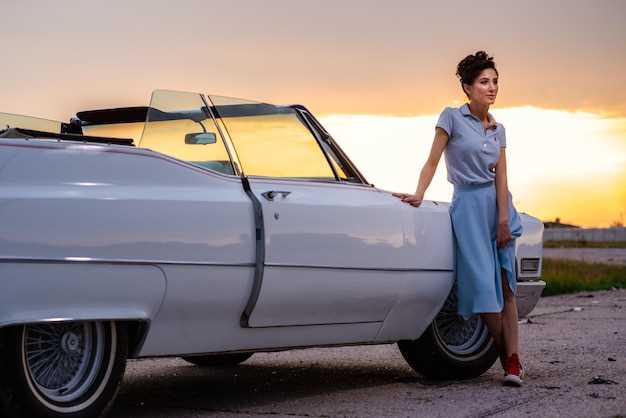
When it comes to shipping classic cars, ensuring they are properly insured is crucial for every collector. These vehicles are not merely modes of transportation; they are valuable investments that require special attention and care during the shipping process. Neglecting to secure adequate insurance can lead to significant financial losses in the event of damage or theft.
Understanding the nuances of classic car insurance when shipping is essential for protecting your investment. Standard auto insurance policies may not cover classic cars adequately, so it’s important to work with insurers who specialize in collector vehicles. These specialized policies often provide broader coverage and cater specifically to the unique needs of classic car owners.
In addition to selecting the right insurance provider, it is vital to document the condition of your vehicle before shipping. Detailed photographs and an accurate appraisal can support your claim should any issues arise during transit. This proactive approach not only helps in securing insurance but also ensures that you are prepared for any potential challenges along the way.
Insuring Classic Cars During Shipping: What You Need to Know

When transporting classic cars, proper insurance coverage is essential for collectors. These vehicles often hold significant financial and emotional value, making them a unique category in the realm of auto insurance.
First and foremost, ensure that your shipping service offers comprehensive insurance options. Regular auto insurance policies may not cover the specific risks associated with classic cars, such as damage during transit or theft. Always look for a policy tailored for collector vehicles to guarantee adequate protection.
Additionally, it’s crucial to document your car’s condition before shipping. Take detailed photographs and maintain records of any unique features or modifications. This documentation can be invaluable when filing a claim, should any issues arise during transportation.
Another consideration is the shipping method. Enclosed transport is often recommended for classic cars, as it offers an additional layer of protection against weather, road debris, and potential theft. Ensure your insurance policy covers the chosen shipping method to avoid any gaps in coverage.
Finally, reviewing and comparing different insurance providers is advisable. Seek out specialists in collector car insurance who understand the intricacies involved in shipping vintage vehicles. They can provide insights into proper valuation and coverage options tailored to your specific needs.
In summary, insuring classic cars during shipping requires careful planning and consideration. By securing proper insurance and documenting your vehicle adequately, you can protect your investment and enjoy peace of mind throughout the transportation process.
Understanding Coverage Options for Collector Cars in Transit

When it comes to shipping collector cars, having the right insurance coverage is essential to ensure their protection against potential risks. Understanding the available coverage options will help you make informed decisions and safeguard your valuable asset during transit.
Here are the primary coverage options to consider:
- All-Risk Coverage: This option provides the broadest protection by covering all risks of physical loss or damage, except for specific exclusions outlined in the policy.
- Named Perils Coverage: This insurance covers only the risks explicitly named in the policy, such as fire, theft, or collision. It’s crucial to review the list of covered perils carefully.
- Agreed Value Coverage: This option ensures that the collector car is insured for a pre-agreed value. In the event of a total loss during transit, you receive the full agreed amount without depreciation deductions.
- Transporter’s Liability Insurance: This coverage protects against damage caused by the shipping company. Ensure the transporter holds adequate insurance to cover potential damages incurred while handling your vehicle.
- Personal Property Insurance: If there are personal items within the car, separate coverage may be necessary for those items, as they may not be included in the collector car insurance policy.
In addition to these options, consider the following factors when selecting coverage:
- Value of the Car: Assess the market value and condition of your collector car to ensure adequate coverage.
- Shipping Method: The mode of transport (open trailer vs. enclosed trailer) can impact the type of coverage needed and associated costs.
- Geographical Considerations: Some areas may have higher risk factors, influencing the insurance premiums and coverage requirements.
- Duration of Transit: Longer shipping durations may necessitate enhanced coverage due to prolonged exposure to potential risks.
By thoroughly understanding and selecting the appropriate coverage options, you can protect your collector car throughout the shipping process, offering peace of mind and financial security against unforeseen events.
Key Considerations When Selecting an Insurance Provider for Shipping
When it comes to shipping classic cars, choosing the right insurance provider is crucial for collectors who want to protect their valuable investments. Here are some key considerations to keep in mind:
Experience with Classic Vehicles: Ensure that the insurance provider has a solid understanding of classic and collector cars. Their experience in this niche market means they can offer tailored policies that consider factors like the car’s age, rarity, and value.
Coverage Options: Look for comprehensive coverage that includes various risks during shipping, such as theft, damage, and natural disasters. Some providers offer additional options, such as agreed value coverage, which guarantees that you receive the agreed amount in case of a total loss.
Claims Process: Investigate the claims process of potential insurance providers. A straightforward and efficient claims process is essential for collectors who may face challenges if their vehicle is damaged or lost. Reading customer reviews can provide insight into how well the provider handles claims.
Policy Limits and Deductibles: Be aware of policy limits and deductibles. Understand the maximum amount the insurance will cover and ensure it aligns with the value of your classic car. Compare different options to find a balance that offers both sufficient coverage and manageable costs.
Reputation and Financial Stability: Research the reputation and financial stability of the insurance provider. Reliable companies have positive ratings from industry organizations and satisfied customers, indicating that they can deliver on their promises, especially during claims.
Specialized Services: Some insurance providers offer specialized services tailored to collectors, such as dedicated customer support and advice on vehicle transportation. Look for providers that can support you throughout the shipping process, enhancing your peace of mind.
By keeping these considerations in mind, collectors can select an insurance provider that not only protects their classic cars during shipping but also supports their unique needs as car enthusiasts.
Common Pitfalls in Classic Car Shipping Insurance and How to Avoid Them
Shipping classic cars requires careful planning and appropriate insurance coverage to safeguard your valuable collector’s item. However, many individuals overlook essential details, leading to costly mistakes. Understanding these common pitfalls can help you avoid detrimental situations during the shipping process.
One significant pitfall is underinsuring the vehicle. Classic cars often appreciate over time, and their market value may exceed standard appraisal rates. Collectors should ensure they obtain an insurance policy that reflects the true value of the car, including any enhancements or restorations made.
Another issue arises from not comprehensively reviewing the insurance policy details. Many collectors fail to understand coverage limits, deductibles, and exclusions which could leave them unprotected in case of damage or theft. It’s crucial to thoroughly read the fine print and clarify any unclear terms with the insurance provider.
Additionally, relying solely on the shipping company’s insurance can be a trap. While many shipping companies offer basic coverage, it may not adequately protect a classic car during transport. It’s advisable for collectors to purchase separate shipping insurance to ensure adequate protection tailored to their specific needs.
Timing is also a common oversight. Failing to secure insurance well in advance can lead to last-minute decisions that result in inadequate coverage or higher rates. Start the insurance process as early as possible to ensure you can compare various options and select the best plan.
Finally, neglecting to document the car’s condition before shipping can be detrimental. Collectors should take detailed photographs and keep records of any imperfections. This documentation can be vital for claims if damage occurs during shipping, providing clear evidence of the vehicle’s pre-shipping state.
By recognizing these pitfalls and taking proactive steps to address them, classic car collectors can protect their investments more effectively during shipping. Proper insurance coverage is an essential component of successful classic car transportation.



